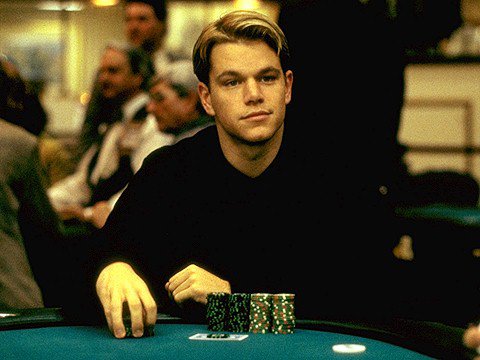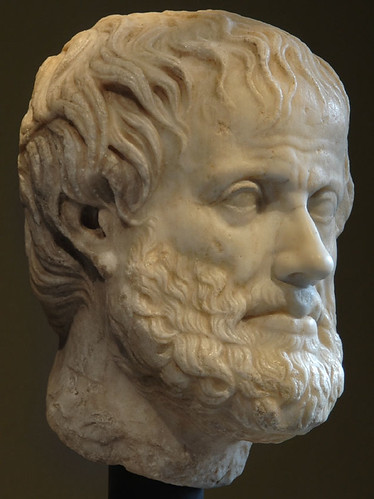
As viewers, we often approach art with a sense of reverence, tending to separate the magnificent creations from the sometimes-messy lives of their creators. We gravitate towards someone’s creativity and legacy, frequently sidestepping the unpleasant aspects that reveal the full, often uncomfortable, human dimension of these iconic figures. Yet, artists are, in the best and worst ways possible, still real people—individuals capable of profound beauty, but also of profound moral failings and grave infractions against the law.
Throughout history, many famous artists have found themselves embroiled in criminal offenses, some driven by personal bitterness or volatile temperaments, others by ambition, desperation, or even principle. Their narratives offer a potent reminder that artistic brilliance does not always correlate with moral uprightness, and indeed, sometimes the most celebrated talents have also been the most lawless. This article embarks on an in-depth cultural commentary, blending journalistic rigor with a narrative flair, to critically analyze the lives of fourteen such figures, examining the serious charges they faced and the indelible impact these controversies left on their careers and enduring legacies.
In eras prior to modern justice systems, the handling of criminal acts was often uneven, heavily influenced by wealth, social standing, and powerful connections. This allowed many artists, particularly those in the pre-modern period, to navigate the legal landscape with a degree of impunity, their genius sometimes serving as a shield against the full consequences of their actions. The myth of the tormented genius, suffering for their art, has historically been a convenient trope, used to soften public perception and explain away behaviors that would otherwise be unequivocally condemned. We peel back these layers to reveal the complex interplay of art, crime, and celebrity, and how these artists’ stories challenge our understanding of creative integrity.

### 1. **Caravaggio: The Shadow of a Death Sentence**No discussion of criminally inclined artists could possibly omit Michelangelo Merisi da Caravaggio, the notorious figure who revolutionized Italian Baroque art with his intense realism and dramatic chiaroscuro. Born in 1571, Caravaggio was as renowned for his violent temperament and unpredictable behavior as he was for his artistic mastery. His life was a tempest of brawls, street fights, and legal disputes, punctuated by an explosive temper that frequently landed him in trouble with Roman authorities, even on one occasion almost murdering a waiter over incorrectly served artichokes.
However, the most infamous incident defining Caravaggio’s dark side was the murder of Ranuccio Tomassoni in 1606. Tomassoni, a young man from an influential Roman family and a known high-end pimp, became entangled in a fatal argument with Caravaggio during a tennis match. Experts speculate the dispute stemmed either from an unpaid gambling debt or Caravaggio’s affair with one of Tomassoni’s workers. The conflict tragically escalated, with Caravaggio stabbing Tomassoni in the thigh, severing an artery, leading to the man’s rapid death.
The immediate aftermath saw Caravaggio fleeing Rome, a city where he had once enjoyed immense prestige and patronage. In his absence, the court sentenced him to death by beheading. The weight of this judgment profoundly impacted his art; in the years that followed, the motif of severed heads became a recurring, stark element in his paintings, expressing the artist’s palpable fear for his own life as he lived as a fugitive. His later works, including ‘David with the Head of Goliath,’ are imbued with this haunting personal narrative.
Beyond his volatile personality, some Caravaggio experts attribute his aggressive behavior to possible lead poisoning. During his era, pigments used for oil paint contained heavy metals and toxic chemicals, and Caravaggio, notoriously messy with his materials, would often leave pigments on his skin and clothes, and even lick his brushes. Symptoms of lead poisoning, such as fits of aggression, mood swings, and impaired rational decision-making, eerily align with the erratic conduct that defined much of Caravaggio’s short, impactful life. Despite his criminal past and fugitive status, his legacy in art institutions often remains untouched, celebrating his genius without fully acknowledging the violent man behind the brush.
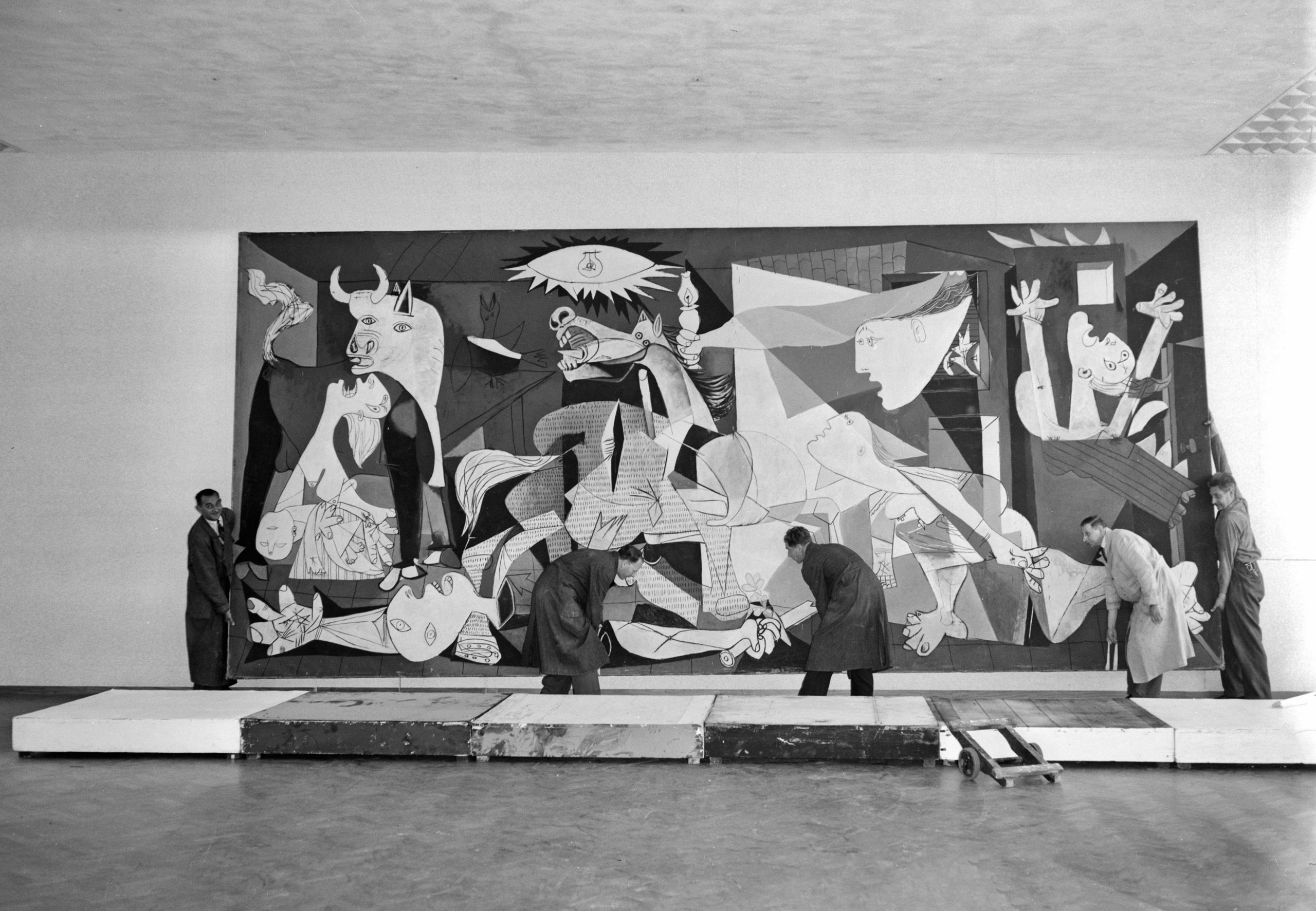
### 2. **Pablo Picasso: The Louvre Theft Connection**In the early 1900s, after settling into the vibrant artistic milieu of Paris, Pablo Picasso quickly ascended to the forefront of the avant-garde. He found himself at the nexus of artistic and intellectual activity, cultivating friendships that were both creatively stimulating and, at times, dangerously illicit. Among these connections was the poet Guillaume Apollinaire, who possessed an intriguing link to the darker, more shadowy corners of the art world, a connection that would soon entangle Picasso himself in a significant scandal.
During his visits to the Louvre, Picasso, then a young artist relentlessly searching for new modes of visual expression, became captivated by prehistoric Iberian sculptures. He perceived in their unique forms—their oddly shaped faces and oversized eyes—the key to unlocking a revolutionary new art form. Through Apollinaire, Picasso contacted the poet’s former secretary, Honore-Joseph Géry Pieret, a man willing to pilfer artifacts for a price. In 1907, Pieret indeed broke into the Louvre, absconding with several of these sculptures.
Months following this audacious theft, Picasso unveiled his groundbreaking Cubist masterpiece, ‘Les Demoiselles d’Avignon.’ This work was, as the context reveals, heavily inspired by the Iberian and African sculptures that had so mesmerized him, some of which were now in his possession. However, Picasso’s involvement in this act of art theft was far from concluded. The stakes escalated dramatically in 1911 when the Louvre suffered an even greater loss: Leonardo da Vinci’s ‘Mona Lisa’ was stolen, leaving barely a trace and igniting a massive public outcry.
Capitalizing on the sensation, Pieret, seeking reward and attention, publicly sold a story about his previous crimes to a local newspaper, inadvertently implicating Picasso and Apollinaire. The artists immediately became prime suspects in the ‘Mona Lisa’ heist, and in a panic, even attempted to discard the stolen Iberian sculptures to erase any evidence. While police ultimately determined that Picasso and Apollinaire had no direct connection to the ‘Mona Lisa’ theft, the investigation nevertheless confirmed their possession of other stolen artifacts, underscoring a brush with crime that highlights the complex, often morally ambiguous paths some artists tread in pursuit of their vision.

### 3. **Benvenuto Cellini: A Life of Violence and Patronage**Benvenuto Cellini, a luminary of the Italian Renaissance, stands as one of Florence’s most prominent sculptors and goldsmiths. His masterpieces, such as the bronze statue ‘Perseus with the Head of Medusa,’ are celebrated examples of artistic skill. Yet, a stark contrast exists between his sublime art and his violent personal life, a life which Cellini himself meticulously documented in his autobiography, sparing no detail of his extensive criminal activities. It is a document that reads more like a confessional rap sheet than a mere personal history.
From a young age, Cellini demonstrated a proclivity for conflict. As a teenage apprentice in a local goldsmith’s workshop, he was banished from his native Florence for initiating a group fight with his peers, an early indicator of his volatile temperament. His violent streak intensified with age; in his late twenties, after participating in the 1527 Sack of Rome, he committed his first murder outside of military action. His victim was a Roman Watch guard, a calculated act of revenge for the guard’s killing of Cellini’s brother months earlier in self-defense.
Cellini’s autobiography boldly claims he killed at least four people during his lifetime. These acts were not solely driven by personal vendettas; sometimes, Cellini harbored clear professional interests, resorting to physical assaults against rival goldsmiths, using violence as a means to eliminate competition and secure his dominance in the craft. His candid recountings of these acts are often presented with a notable lack of remorse, framed instead as justified responses within his personal code of honor and ambition.
Despite his documented crimes, Cellini benefited immensely from the powerful connections he forged. The favors of the Pope and the influential Medici family frequently shielded him from lasting punishment, often forcing him to merely move from city to city to avoid prosecution rather than face severe penalties. While he did serve time in the Castel Sant’Angelo prison in Rome for other offenses, including embezzlement, his artistic reputation consistently earned him pardons and continued commissions. Cellini’s life thus serves as a powerful illustration of how artistic genius and powerful patronage could, in the pre-modern era, effectively mitigate the consequences of a deeply lawless existence.
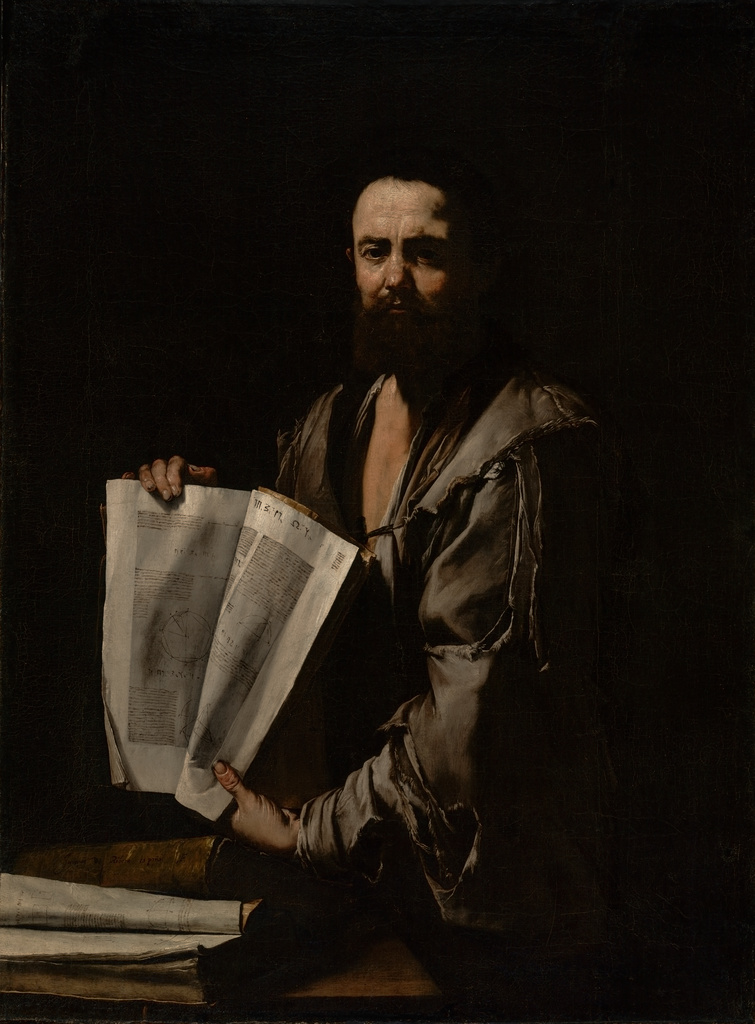
### 4. **Jusepe de Ribera: The Cabal’s Intimidating Hand**Baroque Naples, a bustling trade center, was a city of contradictions: immense opportunities mingled with crushing overpopulation, poverty, and soaring crime rates. This intense environment fostered not only artistic brilliance but also a cutthroat competition among artists vying for lucrative commissions. It was within this cauldron of creativity and desperation that a shadowy collective emerged in the late 1610s, determined to eliminate rivals through decidedly unconventional, and criminal, means: the Cabal of Naples.
Jusepe de Ribera, also known as Lo Spagnoletto, was a Spanish painter and a central figure in this infamous group. Along with native Neapolitan Battistello Caracciolo and Greek Belisario Corenzio, Ribera was a devoted follower of Caravaggio, whose own notorious artist-criminal persona had left a deep imprint on the city a decade prior. This group, and their accomplices, systemically targeted artists who were invited to Naples by local patrons, specifically those tasked with painting local churches and other expensive commissions.
The Cabal’s methods were chillingly effective. They employed threats, intimidation, and physical assaults to drive out their competition, ensuring that the most desirable projects fell into their own hands. Their actions instilled an atmosphere of fear among visiting artists, effectively monopolizing the Neapolitan art scene through brute force rather than superior talent alone. Ribera’s involvement speaks to a grim reality where artistic advancement was sometimes pursued through organized criminal enterprise.
The most famous case illustrating the Cabal’s violent tactics involved the frescos for the Naples Cathedral. When the Bolognese painter Guido Reni was appointed to this prestigious commission, he received numerous death threats, forcing him to abandon the project after two of his assistants mysteriously vanished. Ribera, as a leading member of the Cabal, was an integral part of this reign of terror, showcasing how a celebrated artist could actively participate in a criminal scheme designed to stifle artistic diversity and promote self-interest through intimidation.

### 5. **Battistello Caracciolo: A Native Son’s Criminal Alliance**Battistello Caracciolo, a native Neapolitan painter, was another key member of the notorious Cabal of Naples, operating in the early 17th century. Like his Spanish contemporary Jusepe de Ribera and the Greek Belisario Corenzio, Caracciolo was deeply influenced by the dramatic realism and volatile spirit of Caravaggio, embodying a generation of artists who blended their creative endeavors with a willingness to engage in illicit activities to secure their professional standing in a fiercely competitive environment.
Caracciolo’s role in the Cabal was integral to their collective strategy of undermining and ultimately eliminating artistic competition. The group’s modus operandi involved systematically threatening and assaulting rival artists, particularly those from outside Naples who were invited by local patrons to work on prestigious and well-paying commissions. For Caracciolo and his associates, these aggressive tactics were not just about personal gain; they were about asserting dominance and controlling the flow of artistic patronage within their home city.
The competitive landscape of Baroque Naples, with its burgeoning population and high crime rates, provided fertile ground for such criminal enterprises. The Cabal capitalized on this atmosphere, using fear and coercion to ensure that significant projects, such as the decoration of local churches, remained within their grasp. Caracciolo, as a native son, would have possessed intimate knowledge of the city’s power dynamics and vulnerabilities, making his participation particularly potent in leveraging local influence for the Cabal’s nefarious ends.
His involvement in the Cabal’s activities contributes to a broader understanding of how ambition, coupled with a lack of ethical boundaries, could lead celebrated artists to engage in organized criminal behavior. While the specific details of Caracciolo’s individual acts within the Cabal are less documented than the group’s overall impact, his status as a core member undeniably places him among those artists whose creative output is shadowed by serious allegations of criminal conspiracy and violence against their peers.
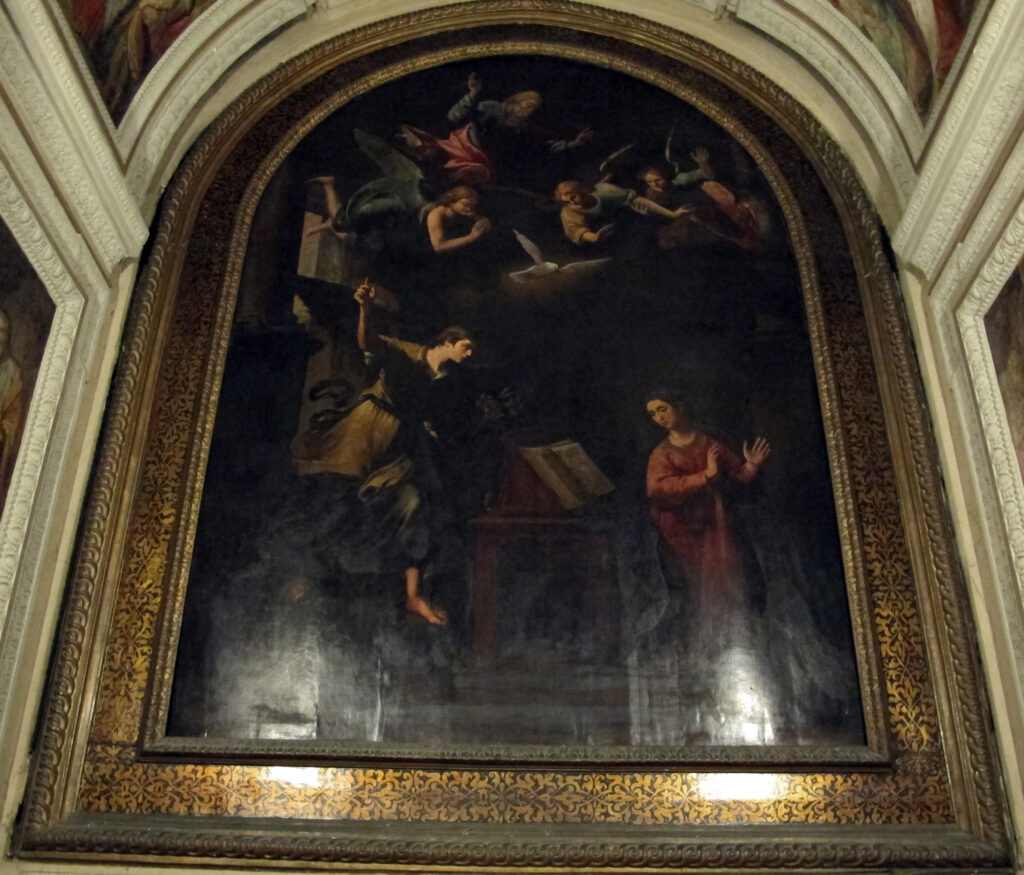
### 6. **Belisario Corenzio: The Unpunished Instigator**Belisario Corenzio, a Greek painter, completed the unholy trinity of the Cabal of Naples, alongside Jusepe de Ribera and Battistello Caracciolo. As a key figure in this aggressive artistic cartel of the early 17th century, Corenzio played a crucial role in orchestrating the threats and assaults against rival artists who dared to compete for lucrative commissions in the highly contested Neapolitan art market. His participation exemplifies the extreme measures some artists took to secure their careers, often at the expense of others’ safety and livelihoods.
The Cabal’s campaign of intimidation reached its peak with the prestigious frescos for the Naples Cathedral. Following Guido Reni’s coerced departure after death threats and the mysterious disappearance of his assistants, Domenichino was appointed to the commission. Tragically, Domenichino died from a mysterious illness, suspiciously similar to poisoning, just a few years after arriving in Naples. Belisario Corenzio was subsequently arrested on suspicion of attacking both Reni and Domenichino, highlighting his direct involvement in the most egregious acts attributed to the Cabal.
Despite the gravity of the accusations and his arrest, Corenzio remarkably never faced a prison sentence. This outcome underscores the uneven nature of justice in the era and the protective influence of powerful patrons. His ability to evade severe punishment, even after being directly implicated in violent acts and suspicious deaths, paints a grim picture of a system where artistic reputation and connections could effectively provide immunity from the law, allowing a criminal enterprise to thrive with apparent impunity.
Corenzio’s unpunished involvement in the Cabal’s violent machinations adds a chilling layer to his legacy. His story is a stark reminder that some artists, driven by relentless ambition, not only crossed ethical lines but actively participated in criminal schemes. The narrative surrounding Corenzio and the Cabal serves as a powerful critical analysis, questioning the boundaries of artistic rivalry and revealing the dark underbelly of a celebrated art historical period, where talent could be intertwined with outright criminality.

### 7. **Egon Schiele: Art on Trial for Public Morality**Egon Schiele, a pivotal figure in the early 20th-century Expressionist movement, was an Austrian painter whose work was characterized by its raw emotional intensity and often provocative sensuality. His unflinching depictions of the human form, frequently devoid of conventional Christian shame, challenged the rigid social norms of his time and sparked considerable controversy. His art, deeply personal and confrontational, inevitably invited scrutiny and assumptions about his private life, leading to serious legal repercussions.
In 1912, Schiele, along with his then-partner Wally Neuzil, sought new inspiration by moving to Neulengbach, hoping to escape the scrutiny of Vienna. While the respectable citizens of the town largely ostracized Schiele due to his reputation and unconventional lifestyle, local children from impoverished families were, perhaps ironically, drawn to the enigmatic artist. Schiele sometimes paid these teenage girls to pose for him, a practice that ignited outrage among their families, who equated modeling with work in their conservative views.
This controversial practice culminated in a significant incident that brought the full force of the law down upon Schiele. After one of his young models asked him and Neuzil to take her to Vienna to live with her grandmother, the girl subsequently fell ill upon arrival. The trio returned to Neulengbach, but by then, the girl’s father had already filed a devastating report, accusing the artist of both rape and kidnapping—charges that threatened to permanently ruin Schiele’s burgeoning career and freedom.
Though no proof of ual misconduct was ever found to substantiate the grave accusations of rape and kidnapping, the town authorities still convicted Schiele on lesser, yet significant, charges. He was found guilty of public immorality and for demonstrating his art in locations accessible to minors. The outcome was severe: Schiele was imprisoned for a month and subsequently forced to leave Neulengbach. This period highlights the critical tension between artistic freedom and societal morality, showcasing how Schiele’s boundary-pushing art, perceived as transgressing acceptable depictions of sexuality, directly led to his legal troubles and cast a long shadow over his legacy as a provocateur on trial.

### 8. **Shepard Fairey: Street Art and Legal Brawls**The very essence of non-authorized public art, such as graffiti and street art, often lies in its fierce independence from established institutions and the conventional art market. It’s a powerful, often subversive, message delivered directly to the public, sidestepping gallery walls and auction houses. Yet, as exemplified by successful street artists like Banksy, this anti-establishment ethos can, ironically, become eagerly embraced and monetized by the very establishment it seeks to critique.
Shepard Fairey, one of the most celebrated street artists of our time, stands as a prime example of this complex dynamic. Renowned globally for his iconic “OBEY” posters, his enduring “Hope” portrait of Barack Obama from 2008, and a multitude of politically charged murals, Fairey’s work has consistently pushed boundaries and sparked dialogue. His art is a powerful force, but its creation often involves actions that cross legal lines.
Throughout his prolific career, Fairey has encountered the full force of the law on numerous occasions. He has amassed a record of more than a dozen arrests and faced various charges, primarily for defacing public property through his artistic interventions. The most notable recent incident occurred in 2015 when Fairey was arrested in Detroit on allegations of vandalism, charges that carried the potential for him to face up to five years in prison. However, like many legal entanglements involving high-profile figures, the case was ultimately settled quietly and away from the public glare, a common outcome that often leaves the deeper questions of artistic freedom versus property rights unresolved.
Fairey’s continuous dance with the legal system underscores a critical aspect of street art’s legacy: while it may challenge authority, it also directly confronts the laws governing public spaces. His journey from underground provocateur to a globally recognized artist, peppered with arrests and court appearances, vividly illustrates the ongoing negotiation between counter-cultural creativity and the structures of society that seek to contain it.
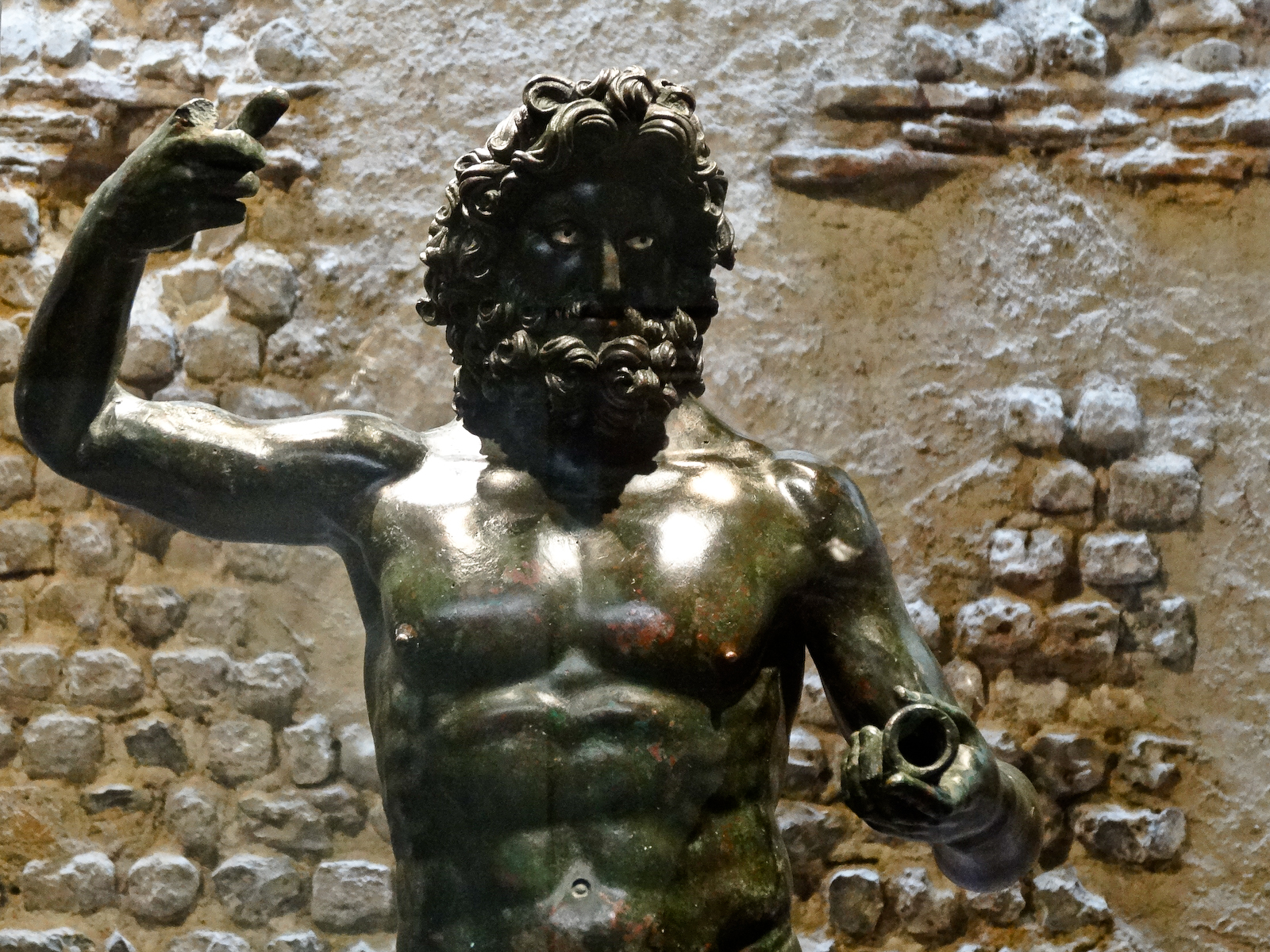
### 9. **Claude Cahun: Surrealism and Resistance**Within the annals of art history, some artists transcend conventional definitions of crime, instead wielding their creative powers as weapons against true tyranny. The Surrealist photographer Claude Cahun, a figure deserving profound recognition on this list, offers such a radically different perspective on “criminality.” Cahun’s transgressions were not for personal gain or violent impulse but rather acts of extraordinary courage and defiance against an occupying force.
In the late 1930s, Cahun and their partner, Marcel Moore, sought a quieter life, settling on the picturesque island of Jersey. This tranquility was shattered in 1940 when Nazi forces occupied the island, plunging its residents into a brutal new reality. Rather than submit, Cahun and Moore, deeply committed to their anti-fascist convictions, swiftly joined the Resistance, embarking on a dangerous mission to subvert the Nazi regime.
Their artistic skills, honed through years of Surrealist experimentation, proved remarkably potent in their new, clandestine roles. The duo meticulously crafted anti-Nazi propaganda, composing biting poems from snippets of radio reports and designing subversive posters and leaflets. Adopting the persona of an anonymous, disillusioned German soldier, Cahun and Moore daringly distributed their incendiary leaflets among the ranks of the Nazi forces, subtly hinting at potential conspiracies and the futility of their leaders’ ambitions.
Their audacious efforts, however, came at a steep price. In November 1944, Cahun and Moore faced trial for the grave charge of undermining the German forces, an act considered high treason by the occupying power. Both artists were sentenced to death, a chilling testament to the perceived threat their artistic activism posed. Miraculously, fate intervened; the sentence was never carried out, as the island was liberated just several months later. Cahun’s legacy remains a powerful narrative of art as resistance, where defiance against injustice became the ultimate act of creative integrity.

### 10. **Lisa Schiff: The Art Adviser’s Ponzi Scheme**In the rarefied world of high art, where wealth and prestige often obscure deeper ethical considerations, Lisa Schiff ascended to become one of the most celebrated art advisers. She was, in essence, a master matchmaker, connecting affluent clients with pricey paintings. Her influence was such that she was credited with elevating the field of art advising from a mere vanity project for bored socialites into a respected profession, akin to an asset management firm, often lecturing clients as an authority on ethics.
Yet, behind this meticulously crafted façade of success, Schiff harbored a devastating secret: she was systematically stealing millions from the very clients she ostensibly served. Her intricate web of deceit involved classic Ponzi scheme tactics, like paying one client with another’s money or leveraging friendships to maintain the illusion of impending late payments. By the time her elaborate scheme unraveled in 2023, she had illicitly siphoned approximately $6.4 million from at least a dozen individuals, leaving a trail of financial devastation and shattered trust.
The full weight of her transgressions came to light when she pleaded guilty in federal court in Manhattan to charges of defrauding her clients. Federal prosecutors described her operation, which involved some 55 artworks and began in 2018, as, in essence, an art-world Ponzi scheme. Her methods included directly siphoning money from the sale of clients’ art and pocketing funds entrusted for new purchases, only to never acquire the artwork. With her sentencing scheduled for March 19, she faces a potential sentence of up to 20 years in prison.
Schiff’s clientele included sophisticated figures like real-estate heir Candace Barasch and veteran dealer Adam Sheffer. She often blurred professional lines, even confiding, “advising is just my way to buy things that I wish I could buy myself.” The implosion of her career occurred dramatically in May 2023, when she confessed to Sheffer that $1.8 million was “gone.” Though she later texted apologies, she had already initiated turning herself in. Her case has sent shockwaves through the largely unregulated art advising business, highlighting the critical need for transparency and leaving an indelible stain on an industry built fundamentally on trust. She confessed, “I’m the worst kind of perpetrator, because I seem so good… and I stole your money.”
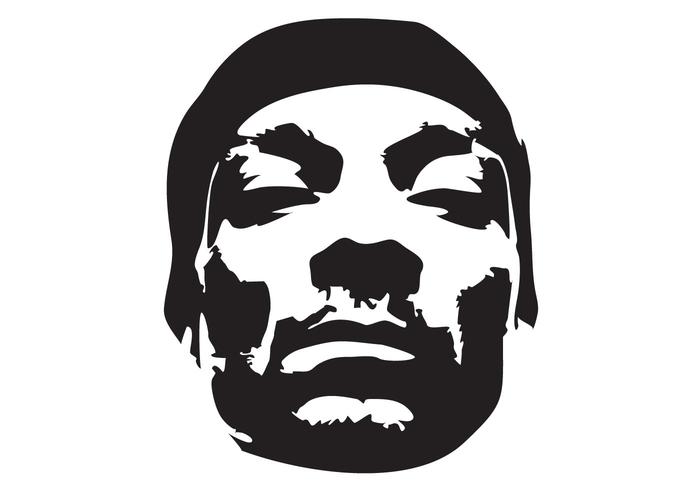
### 11. **Snoop Dogg: Acquittal in a High-Stakes Murder Trial**The intersection of hip-hop culture and the legal system has, regrettably, always shared a complex and often inexplicable link. It is not uncommon for rappers to find themselves entangled in courtroom dramas, whether the circumstances involve self-defense, tragic accidents, or proximity to a crime. While some artists are ultimately found guilty, others, proclaiming their innocence, successfully navigate life-changing charges through legal defense.
One of the most nationally captivating examples occurred in 1995, when Snoop Dogg, then a burgeoning icon of West Coast hip-hop, made headlines across the country. He was arrested on a first-degree murder charge, stemming from an incident where his bodyguard, McKinley Lee, tragically killed a rival gang member. The gravity of the accusation cast a long shadow over the nascent career of the artist, threatening to derail everything he had worked for.
However, after a protracted and highly publicized trial, both Snoop Dogg and his bodyguard were ultimately acquitted. The crucial turning point rested on compelling evidence demonstrating their actions were in self-defense. This significant legal victory was not just a personal triumph; it opened the path for one of hip-hop’s most iconic releases. Snoop Dogg’s critically acclaimed debut album, *Doggystyle*, gained even more profound cultural weight, cementing his place not only as a musical trailblazer but as a figure who had stared down life-altering circumstances and emerged victorious.

### 12. **Gucci Mane: From Beef to Charges Dropped**The intricate and sometimes volatile relationships within the hip-hop world can, unfortunately, spill over into real-world conflicts with serious legal repercussions. Following artists like Snoop Dogg who navigated perilous legal waters, Radric Delantic Davis, famously known as Gucci Mane, also found himself embroiled in a high-profile murder trial that threatened to reshape his life and career, illustrating the severe challenges many prominent hip-hop figures confront.
The genesis of Gucci Mane’s legal troubles in the mid-2000s was deeply rooted in a bitter and well-documented feud with fellow rapper Young Jeezy. This rivalry escalated dramatically, leading to tragic circumstances that culminated in Gucci Mane’s infamous 2005 murder trial, stemming from an incident involving the death of Henry Clark during a home invasion at Gucci Mane’s residence. The allegations captivated hip-hop enthusiasts and prosecutors alike.
Despite the grave nature of the charges, the legal proceedings ultimately concluded with a significant outcome for the artist: the murder charges against him were dropped. This reprieve from an existential threat allowed him to continue his artistic endeavors. Gucci Mane’s ability to navigate this critical legal battle underscores a broader narrative within hip-hop, where artists are often forced to confront legal challenges that are disproportionately highlighted in the public sphere, showcasing resilience in overcoming adversity.

### 13. **A$AP Rocky: Facing Down Allegations**The pattern of prominent hip-hop artists facing serious charges, only to emerge with some form of legal victory, continued into more recent times, captivating public attention and reinforcing the genre’s often turbulent relationship with the law. Rakim Mayers, known universally as A$AP Rocky, became the subject of national headlines in January 2025 when he found himself on trial for allegations that cast a grave shadow over his celebrated career.
The specific accusations against the Harlem, New York rapper were stark: he was accused of allegedly shooting his childhood friend, Terell Ephron, also known as A$AP Relli. This high-stakes legal battle, unfolding in a Los Angeles courtroom, garnered significant media scrutiny. The potential ramifications for A$AP Rocky’s career, which has seen him ascend to global stardom in music and fashion, were immense.
However, following a rigorous 14-day trial, A$AP Rocky was ultimately acquitted of the charges. This verdict marked a monumental legal triumph, allowing him to clear his name and move forward from the deeply unsettling allegations. His acquittal contributes to the ongoing narrative of hip-hop figures who, despite intense public and legal scrutiny, manage to overcome the formidable challenges of the justice system, underscoring that due process can also lead to exoneration.

### 14. **YNW Melly: The Unresolved Legacy of a Double-Murder Trial**While many hip-hop artists successfully navigate the treacherous waters of the legal system, securing acquittals or having charges dropped, some face ongoing battles with profoundly uncertain outcomes. The case of Jamell Maurice Demons, professionally known as YNW Melly, stands as a stark and sobering reminder that not all high-profile legal entanglements in the hip-hop world result in clear-cut victories, leaving legacies in a state of unresolved complexity.
YNW Melly garnered national attention in 2019 when he was arrested and charged with two counts of premeditated first-degree murder, in connection with the deaths of his childhood friends Anthony Williams (YNW Sakchaser) and Yandon Batiste (YNW Juvy). The accusations sent shockwaves through the music industry, given the artist’s rising popularity and the graphic nature of the allegations, which implicated him directly in the deaths of those close to him.
His highly publicized double-murder trial, which concluded in 2023, resulted in a mistrial, signifying the jury was unable to reach a unanimous decision. This means his legal battle is far from over, leaving him in a protracted state of judicial uncertainty and casting a heavy shadow over his career and public image. YNW Melly is set to face a retrial, powerfully illustrating how allegations, even without a conclusive verdict, can irrevocably shape an artist’s legacy.
**The Enduring Tangle of Art and Accusation**
As we close this in-depth exploration, it becomes strikingly clear that the celebrated figures of the art world, from the classical masters to contemporary provocateurs and hip-hop titans, are often as complex and flawed as the societies they inhabit. Their stories, spanning centuries and genres, consistently challenge the romanticized notion of the artist as an untouchable genius. Instead, they present a raw, often unsettling truth: that brilliance can coexist with profound moral failings, criminal enterprise, or simply the harsh realities of a life lived under scrutiny.
From Caravaggio’s violent escapades and Cellini’s murderous boasts to Schiff’s sophisticated fraud and the hip-hop artists battling for their freedom, these narratives underscore the pervasive and multifaceted link between creativity and conflict. Whether driven by ambition, desperation, or principled defiance, these individuals navigated legal systems that were often uneven, swayed by power, wealth, or public perception. The controversies they faced were not mere footnotes; they were pivotal moments that profoundly shaped their lives, altered their public standing, and, in many cases, indelibly influenced the legacies they left behind.
Ultimately, these tales compel us to look beyond the canvas, the stage, or the mic, to acknowledge the full, often uncomfortable, human dimension of these celebrated figures. By critically examining their brushes with the law, we gain a deeper, more nuanced understanding of how art, crime, and celebrity intertwine, reminding us that the echoes of their actions, both creative and criminal, continue to resonate through time, forever entwined with the masterpieces they created.


